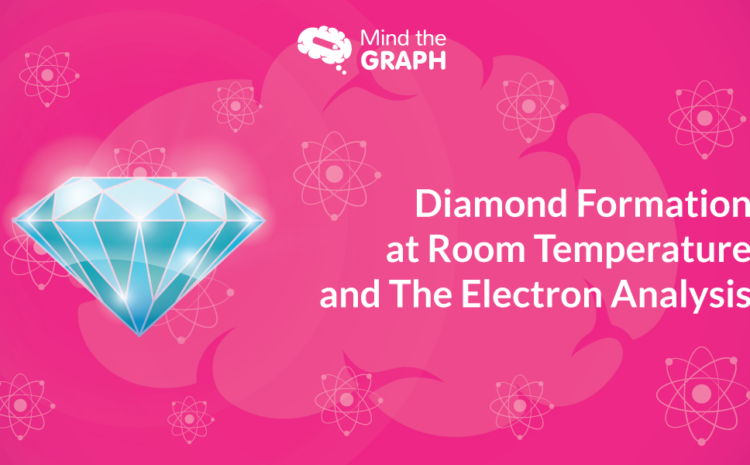In November 2020, was published an article reporting the synthesis of a nanocrystalline diamond and lonsdaleite at room temperature, something until today considered impossible to be done.
The synthesis was conducted under a pressure of 80GPa from a non-crystalline carbon sample precursor. This was only possible with high pressures and shear stress, both were “important for promoting phase formation since it can help overcome kinetic barriers”, according to the article.
Results of the study lie on the use of a very common electron microscopy technique quite used in Crystallography, which is the experimental field that studies the arrangement of the atoms in crystalline solids, in the case of the present article, Diamond, and Lonsdaleite.
Diamond, the little (or not) and precious piece of shiny rock, is not just expensive jewelry, it also an immensely important material due to its properties, allowing it to be used in normal and extreme environments.
Some useful properties are, extreme hardness, high thermal conductivity and it also could be used in biomedical applications, among others.
The Lonsdaleite is a diamond-like material with few differences in the crystal structure when compared to diamond, while the diamond has a cubic crystal structure with a tetrahedrally bonded carbon, the Lonsdaleite has a hexagonal crystal structure, a less common form of rearrangement.
Most research about diamond synthesis reports the need for two excitation forms to surpass the high kinetic barrier of material phase changes.
High pressure and elevated temperature are usually employed to synthesize diamond and lonsdaleite inside the lab.
Scientists today have a diagram that shows the physical states of some material based on temperature and pressure called the phase diagram. Very famous and useful guide tool for scientists to know what temperature and pressure are needed to reach a specific state, like solid, liquid, or gaseous. In atoms of carbon, graphite and diamond are two examples of solid states.
If you look at the carbon diagram, the diamond state could be achieved at room temperature above the pressure of 2GPa, but in reality, other factors need to be considered, factors that can cause a huge difference in the final result. One of these factors mentioned in the article is shear stress.
Shear stress is known as a process where parallel layers slip through each other. A very simple example of that is when you put your hands together, and start to slip one on another – like when you are feeling cold and want to warm up your hands – this movement creates shear stress in the hands or in the material being used.
The shear stress can promote the phase change of materials. Not considering temperature, shear stress turns to be an important component of how “the diamond can be formed in a much wider range of environments, both terrestrial and extra-terrestrial, than previously believed”, but many more studies are needed to confirm the shear stress effects. The lonsdaleite formation has also been associated with shear stress.
Trying to produce diamond and lonsdaleite at room temperature, scientists put glassy carbon samples under compression of 80×109Pa – that is a lot of pressure, much, much more than the pressure you felt going under a regular test in college.
This number is equivalent to almost 800 thousand-atmosphere pressure – we live under only one atmosphere.
Scientists analyzed the sample results through three different types of electron microscopy techniques. Raman Spectroscopy, X-ray diffraction, and TEM (transmission electron microscopy). Let’s check out each one of these.
The Raman Spectroscopy is a technique that provides a structural fingerprint of a specific material using the vibrational modes of molecules.
The sample material interacts with a monochromatic light – usually a laser – absorbing and emitting photons in an inelastic scattering way, in other words, the molecular vibration of the sample absorbs a number of photons, the amount absorbed is different from the one emitted.
This difference is detected and the final result allows scientists to get structural information of the sample.
The X-ray diffraction technique involves the usage of an electron beam instead of monochromatic light. In virtue of the atom’s arrangement patterns of the crystal structure, when the X-ray beam reaches the sample, it diffracts in many different angles and directions.
Scientists can measure these angles and intensities of the diffracted beam transforming the data into a three-dimensional picture with the atom’s positions in the crystal.
The TEM, Transmission electron microscopy is a microscopy technique that uses a beam of electrons instead of light as well as X-ray diffraction.
The sample is exposed to the beam, which passes through it producing an image with help of a fluorescence detector.
This technique requires a sample preparation on a grid and it is labeled as an evasive technique because of sample loss, being destroyed during analysis.
After the attempt to produce a diamond, researchers discovered through Raman that the samples consisted only of graphitic material.
However, the X-ray diffraction patterns showed a different result, demonstrating the presence of lonsdaleite (12%), diamond (3%), and graphite (85%).
These divergent results are explained by differences in each technique. The Raman is capable to analyze only the surface of materials, whereas the X-ray diffraction can go through the entire thickness of the sample.
Overall, this result proves that the formation of hard materials like a diamond is a result of not only pressure and temperature.
And other factors can induce material formation like the shear stress or factors that science doesn’t even know yet.
Maybe in the future, when this compression technique has established itself better, cheapening the diamond production, science will be able to take full advantage of the material.
_____
Are you already a Mind the Graph user? If you don’t, you can start right now! You can also click here to see our scientific Illustrations gallery, you don’t need to start your project from scratch!

Subscribe to our newsletter
Exclusive high quality content about effective visual
communication in science.




